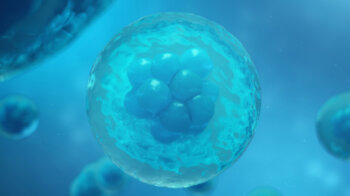NeuroCELLNESS-Combi® is an innovative multi-level cell therapy that combines intravenous, intrathecal and local cell administration to slow the progression of ALS and restore nervous system function.
Amyotrophic lateral sclerosis (ALS) is a very rare and at the same time the most serious incurable disease that neurologists deal with. During ALS, motor neurons in the anterior horns of the spinal cord die, and in the later stages dementia develops. The causes of amyotrophic lateral sclerosis are unknown, so there are no possibilities for prevention and early diagnosis. ALS is not a demyelinating disease – the main problem is the degeneration and death of neurons, which makes it extremely difficult to treat. However, modern biotechnologies provide new opportunities to support patients and slow down the progression of the disease. It is for this purpose that the NeuroCELLNESS-Combi® program has been created at the VIRTUS Institute, combining intravenous, intrathecal and local cell administration.
What is amyotrophic lateral sclerosis (ALS)?
Amyotrophic lateral sclerosis is a severe, progressive neurodegenerative disease in which motor neurons (nerve cells that control muscle function) are gradually destroyed. The death of motor neurons leads to progressive muscle weakness, atrophy, paralysis, swallowing, speech, and breathing disorders, and thus to gradual exhaustion of the body and loss of the ability to live independently.
Indications for cell therapy in amyotrophic lateral sclerosis
The first symptoms of ALS (muscle fibrillation, atrophy, depression of the interdigital space on the hands) begin suddenly. Patients may not feel them, but the neurologist draws attention to this during the consultation and refers for electroneurography. The signs of amyotrophic lateral sclerosis that patients complain about are the following:
- weakness in the arms and legs, difficulty lifting objects, walking;
- muscle atrophy, tremor, muscle twitching (fasciculations);
- speech disorders (dysarthria), swallowing (dysphagia);
- shortness of breath, rapid fatigue;
- weight loss, general exhaustion;
- emotional disorders: anxiety, depression.
The symptoms of ALS and multiple sclerosis are somewhat similar, although they are completely different diseases. Needle electromyography shows ALS-specific changes.
Advantages of cell therapy in the treatment of ALS
NeuroCELLNESS-Combi® is a comprehensive strategy that combines systemic, local and intrathecal action in the treatment of ALS. Its main advantages are the individual approach of Smart Cell to each patient, as well as preliminary preparation with plasmapheresis, which increases the effectiveness and safety of therapy. Thus, the patient has a real chance to slow down the progression of ALS and improve the quality of life as much as possible.
The principle of action of cell therapy in ALS
Unfortunately, ALS is a disease that inevitably progresses, and slowing down the process is the best result that can be expected. Treatment of ALS with mesenchymal stem cells (MSCs) is based on the following principles:
- neuroprotection – MSCs secrete growth factors (GDNF, BDNF, NGF) that support the viability of neurons, slowing their death;
- immunomodulation – reducing the level of inflammatory cytokines and autoimmune aggression;
- angiogenesis – improving the blood supply to the spinal cord and neurons;
- reducing oxidative stress – neutralizing free radicals that damage neurons;
- local action with interfascial and paravertebral administration – reducing local inflammation and stimulating the regeneration of nervous tissues.
Thanks to this, it is possible to extend the patient’s life.
Types of stem cells used in ALS
Autologous mesenchymal stem cells, obtained from subcutaneous fat or intact spinal cord, are used to treat amyotrophic lateral sclerosis. These are multifunctional cells that have the unique ability to differentiate into other body cells and self-replicate. They are then cultured and prepared into injectable material.
Results of cell therapy in ALS
As a result of cell therapy, patients note a slowdown in the progression of muscle weakness and atrophy, an increase in strength in the arms and legs, as well as easier breathing, reduced shortness of breath, easier swallowing and speech. Convulsions and fasciculations become less. In general, the person feels more independent, and their quality of life and mood improve.






















